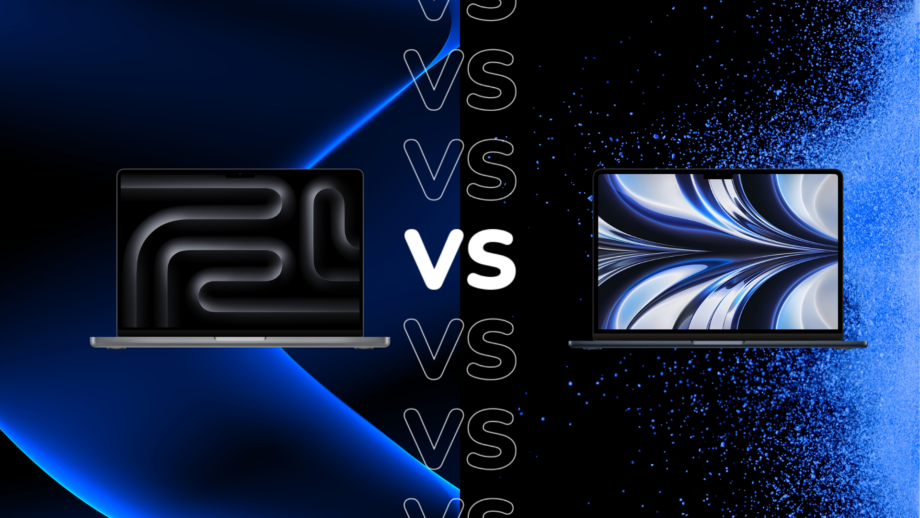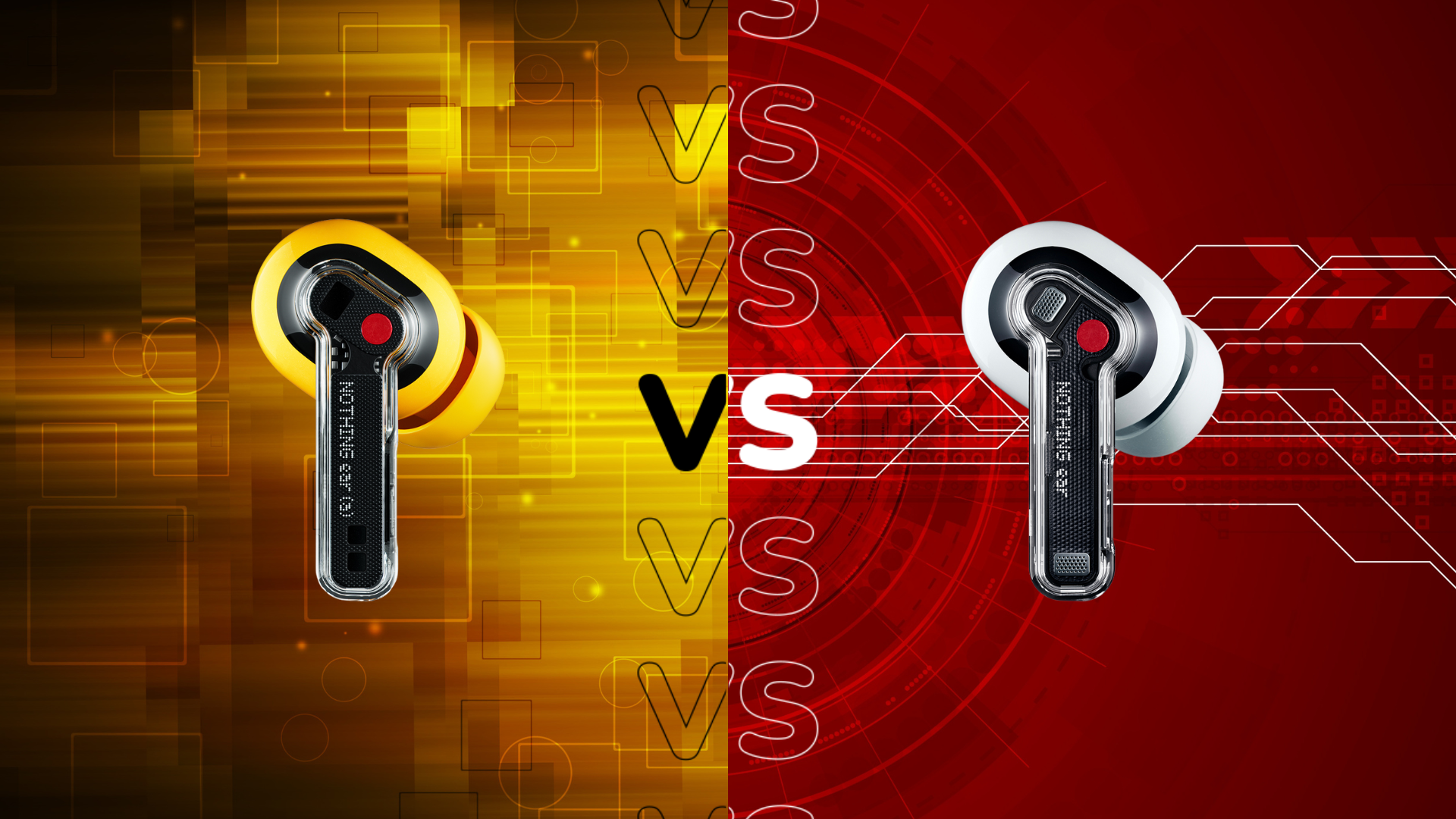Apple MacBook Pro M3 vs MacBook Air M2: Pro or Air?

Apple recently announced its latest line of MacBook Pro laptops powered by the new Apple M3 series chips, including the M3, the M3 Pro and the M3 Max.
We’ve set the MacBook Pro M3 head-to-head against the most powerful MacBook Air, the MacBook Air M2, to help you decide which Apple laptop is right for you.
The MacBook Pro M3 is faster
The MacBook Pro M3 is powered by Apple’s M3 chips. The performance you experience will differ depending on the model you opt for, with the 14-inch model available with the M3, M3 Pro or M3 Max chip and the 16-inch MacBook Pro configurable with the M3 Pro or M3 Max.
However, the M3 series offers faster and more efficient performance compared to the M2 series, along with faster graphics performance and new GPU features like Dynamic Caching, hardware-accelerated ray tracing and hardware-accelerated mesh shading.
The M3 chips also benefit from an up to 15% faster Neural Engine and an increased amount of unified memory depending on the chipset.
The MacBook Pro M3 has a brighter display
When it comes to the display, the MacBook Pro M3 bests the MacBook Air M2 with its brighter Liquid Retina XDR mini LED display that supports 1000 nits of sustained full-screen brightness and 1600 nits of peak brightness when playing HDR content.
The MacBook Air M2, meanwhile, features a Liquid Retina display that delivers up to 500 nits of brightness.
The MacBook Pro M3 also packs a smoother 120Hz ProMotion refresh rate, along with support for AV1 decode for more efficient and high-quality video experiences via streaming services.

The MacBook Pro M3 offers a longer battery life
Another benefit to the MacBook Pro M3 over the MacBook Air M2 is its (generally) longer battery life.
The 14-inch MacBook Pro M3 and both 16-inch MacBook Pro M3 Pro and M3 Max models offer up to 15 hours of wireless web use and up to 22 hours of Apple TV movie playback from a single charge, whereas the MacBook Air M2 delivers the same up to 15 hours of wireless web use but less Apple TV playback at up to 18 hours.
The 14-inch MacBook Pro M3 Pro and M3 Max configurations are the exception to this, offering up to 12 hours of wireless web use and up to 18 hours of Apple TV playback from one charge.
The MacBook Pro M3 models also support faster 96-140W charging compared to the 70W fast charging found on the MacBook Air M2.
The MacBook Pro M3 includes more ports
If you’re not keen on carrying a dongle around, you’ll might be happy to hear that the MacBook Pro M3 includes more ports than the MacBook Air M2.
Both laptops include two Thunderbolt/USB 4 (USB-C) ports, with the MacBook Pro M3 benefiting from an HDMI port and an SDXC card slot on top of this. The M3 Pro and M3 Max configurations also include a third Thunderbolt port.

The MacBook Air M2 is available in more colours
The MacBook Air M2 does win when it comes to design.
Not only is the laptop slimmer and more lightweight, but it also comes in a wider array of colours. Where the MacBook Pro M3 comes in Space Grey (or Space Black depending on the model) and Silver, the MacBook Air M2 is available in Space Grey, Silver, Midnight and Starlight.
The MacBook Air M2 is cheaper
Finally, the MacBook Air M2 is the more affordable option of the two, with prices starting at $1099/£1149 for the 13-inch model and $1299/£1399 for the 15-inch model.
The MacBook Pro M3, meanwhile, starts at $1599/£1699 for the 14-inch M3-powered laptop, $1999/£2099 for the 14-inch M3 Pro or M3 Max-powered version and $2499/£2599 for the 16-inch model.








